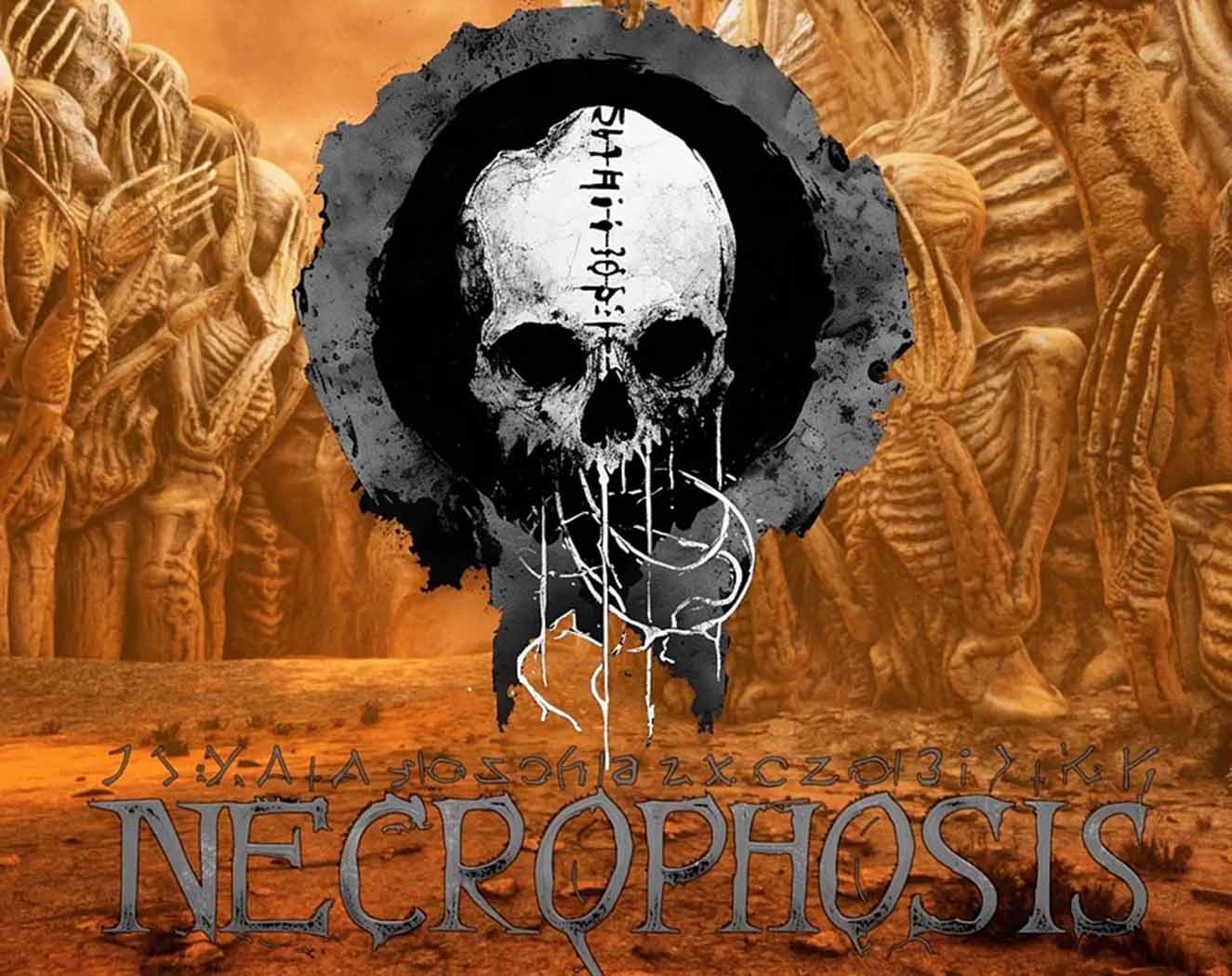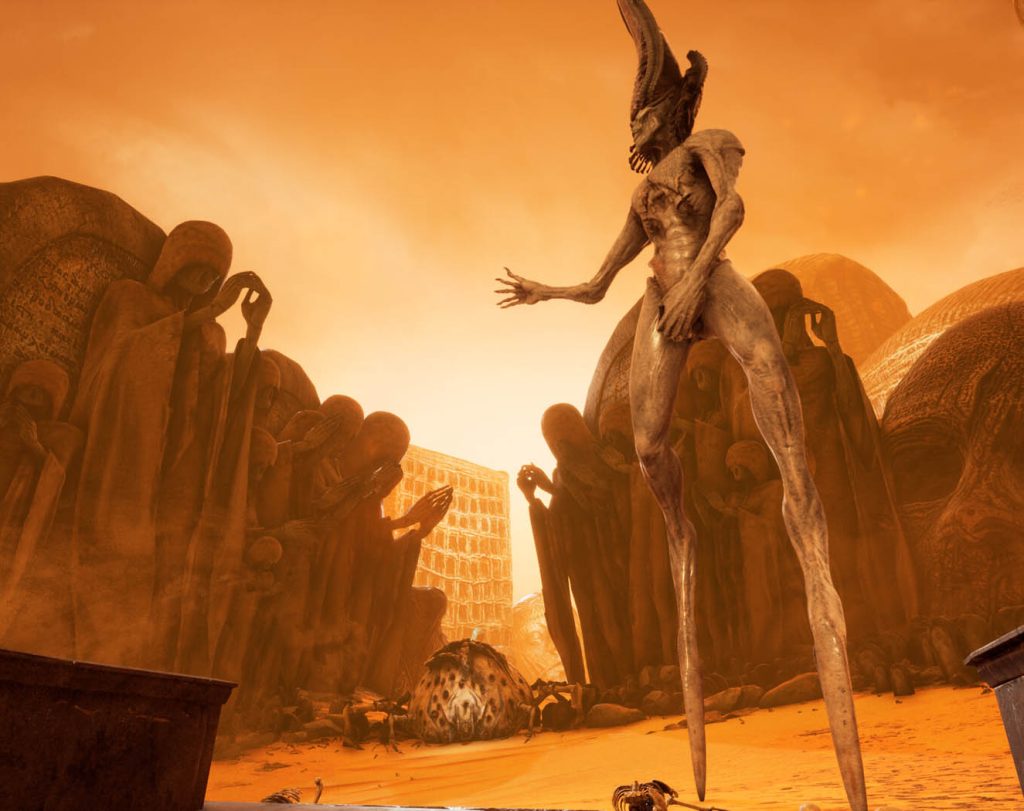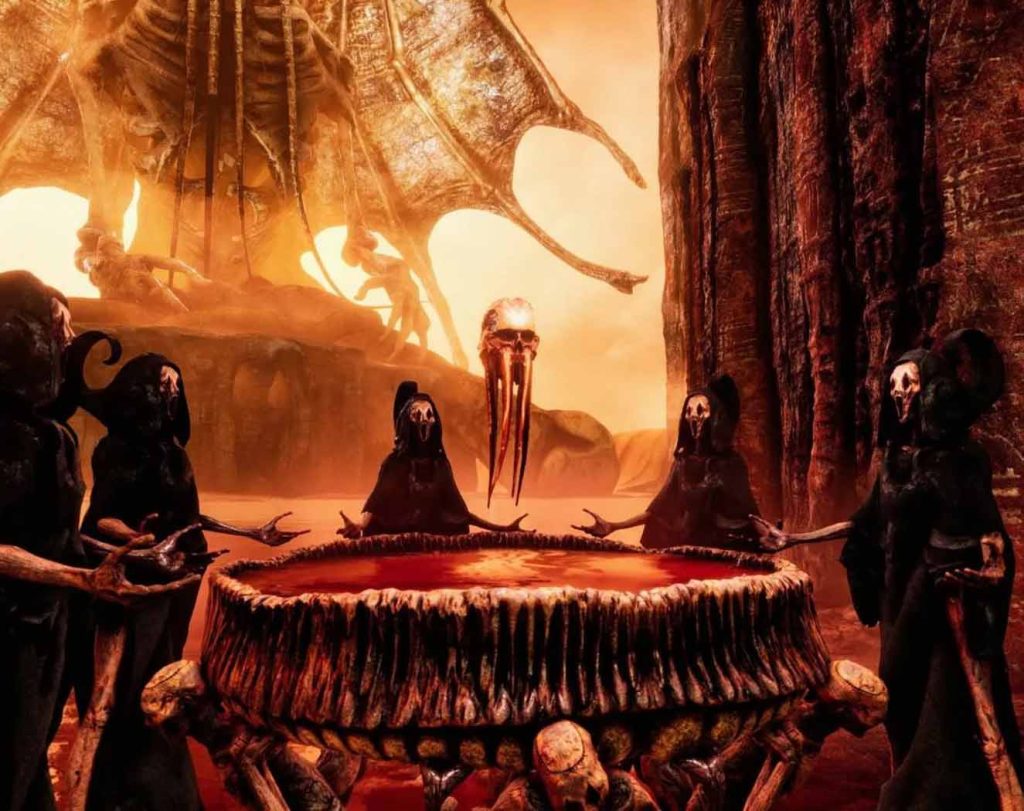
The Dark Flower Blooming in Despair — A Deep Dive into Necrophosis
1. Prologue: A World Where Death and Aesthetics Intertwine
Entering the world of Necrophosis feels like stepping into a fragmented yet eerily beautiful dream. The screen is filled with decay, mutation, rusted metal, and the ruins of a lost civilization, each detail telling a story of what existence may become after death. Unlike traditional horror games, this work uses death itself as an aesthetic, devoid of gory violence but instead creating an oppressive, suffocating atmosphere.
The environmental design is striking, presented in a surrealistic style that could be imagined as a fusion of the works of H.R. Giger and Zdzisław Beksiński. Whether it’s the writhing remains of biological creatures on the ground or the shattered bone clouds drifting through the sky, every detail conveys an overwhelming sense of solitude and despair.
2. World Building: The Soul’s Rest in the Aftermath of the Apocalypse
Necrophosis takes place in a post-apocalyptic world where civilization has crumbled completely, and humanity has long since vanished. What remains is a polluted and twisted ecosystem. In this world, time seems to have stopped, and the boundary between life and death has blurred, creating an environment that resembles a giant corpse, slowly decaying.
The ruins of buildings are not just heaps of debris but are organically fused with biological tissue, forming strange, half-organic, half-mechanical structures. Between the ruins, massive skeletal frames support hollow domes, as if once sheltering lost lifeforms. This setup brings to mind the concept of purgatory in religious texts—an inescapable, tragic space that lies between life and death.
The game does not provide a straightforward narrative but instead tells its story through environmental storytelling, leaving players to piece together the fragments of the world’s history. Through observation and deduction, players gradually begin to understand the world’s past and present. This indirect storytelling approach imbues every detail with value and greatly enhances the immersion and sense of discovery.

3. Gameplay Experience: Searching for a Path in Despair
Necrophosis uses a first-person perspective and does not feature a conventional combat system. Instead, the game emphasizes exploration and puzzle-solving, deepening the player’s sense of isolation. Each step in this environment feels uncertain and perilous, as if something lurking in the darkness might strike at any moment.
The puzzle design is incredibly intricate, requiring players to notice subtle environmental changes, such as hidden symbols on decaying walls or hidden mechanisms revealed by squirming flesh. This attention to detail adds layers of complexity to the experience, and solving puzzles brings a strong sense of accomplishment.
The game doesn’t offer traditional “quest markers” or “goal indicators,” forcing players to rely solely on their own exploration. While this increases the difficulty, it also enhances the immersion, making players feel as though they are truly navigating a chaotic, unfamiliar world.
4. Art and Sound: The Perfect Fusion of the Macabre and the Elegant
The visual presentation in Necrophosis is remarkable, with every frame resembling a painting of despair and brutality. The color palette primarily uses dark grays, rusted reds, and decaying greens, creating a mood of oppression and unease. The use of light and shadow in the environments is masterful, sometimes using blinding white light to evoke a surreal feeling, while at other times hiding unknown threats in deep shadows.
The sound design is similarly restrained and refined. The background music is nearly imperceptible, often replaced by environmental sounds—wet, slithering noises of decaying flesh, low, distant moans, and occasional sharp metallic screeches. These sounds seem to breathe life into the world, keeping players constantly on edge, unable to relax.
Certain specific areas feature sounds like heartbeat rhythms or faint whispers, further enhancing the immersion. These auditory elements work on a subconscious level, making players feel a sense of impending danger or anxiety, which amplifies the overall atmosphere.
5. Characters and Existence: The Traces of Life in a Nameless World
In Necrophosis, traditional “characters” rarely appear. Instead, the world itself acts as a living, breathing entity. Every piece of decaying flesh, every fragment of metal seems to carry the traces of past lives. Occasionally, players will encounter remnants of life forms—existences that are tragic, struggling between life and death.
These life forms often appear in grotesque, misshapen forms. Some resemble corpses bound by metal, while others look like incomplete, mutated creatures. They do not actively attack players, but their silent presence creates an unsettling feeling, as though they are watching the player, despite not moving.
Each of these beings tells a story in silence. Their existence speaks of loss, suffering, and hopelessness, creating a unique sense of tragic beauty in the world.
6. Level Design: Non-Linearity and the Maze of Metaphors
The level design in Necrophosis is highly non-linear, and players will often find themselves wandering through complex mazes. These mazes are not simply time-wasters but are instead built with deeper symbolic meaning behind each structure and layout.
For example, an area covered in rusted bones might represent the total collapse of a particular civilization, while a vast spiral staircase could symbolize the cycle of life repeating in endless despair. By closely observing and interpreting the environmental details, players can gradually piece together the broader world narrative.
Certain levels incorporate psychological horror elements, such as roads that suddenly disappear, shifting landscapes, or strange phenomena reflected in mirrors. These elements not only test players’ observation and memory but also challenge their mental fortitude.
7. Atmosphere: The Silent Oppression
One of the most memorable aspects of Necrophosis is the painstakingly crafted atmosphere. There are no overt jump scares, no relentless monster chases. Instead, the game relies on a slow, creeping sense of oppression that permeates every moment of the experience.
Walking through the ruined landscape, every glance over the shoulder or momentary pause triggers a strange feeling of being watched or followed. Even though the surroundings are seemingly empty, this constant psychological tension is ever-present, affecting players on a deeper, subconscious level. The emotional impact of this ongoing, silent pressure is far more enduring than traditional visual shocks.
8. Technical Performance: Fine-Tuning Details for Enhanced Immersion
On the technical side, Necrophosis features cutting-edge lighting and high-resolution modeling that make the scenes feel incredibly lifelike. The tactile sensation of decaying flesh, the rusted texture of metal fragments, and the particles of dust floating in the air all contribute to the game’s astonishing level of detail.
In terms of optimization, the game handles its highly detailed environments with remarkable efficiency. Despite the heavy graphical load, the game runs smoothly, with minimal loading times and almost no noticeable lag. Even on systems with lower specs, the game still provides a solid experience, which is particularly impressive for a game that heavily relies on visual and auditory immersion.

9. Player Experience and Emotional Resonance
Necrophosis is not a game for the casual player. Its slow pace and heavy, depressing themes demand a high level of emotional resilience from the player. However, this also allows for an experience that differs drastically from mainstream games, offering a unique emotional resonance.
Walking through the silent ruins, feeling the decay and destruction around you, and confronting the irreversible nature of death, a deep sense of empathy and reverence for life’s fragility arises. The philosophical reflections on the end of life surpass the usual entertainment of a game, creating a profoundly reflective experience.
10. Who Will Enjoy It?
Players who love exploration, enjoy solving intricate puzzles, and prefer immersive experiences will find much to appreciate in Necrophosis. Those who favor fast-paced, action-driven games might find the slower rhythm and somber tone somewhat challenging. However, for those willing to slow down and truly absorb the haunting atmosphere and profound emotional themes, it offers an unforgettable journey.
11. Where to Buy and Recommended Platforms
Necrophosis is available on the following platforms:
- Steam: Offers a digital purchase and download option, complete with cloud save support.
- Epic Games Store: Frequently holds discounts, so keep an eye on price fluctuations.
- GOG: Ideal for players who prefer DRM-free versions.
- PlayStation Store: An optimized version for console players, supporting 4K resolution and HDR.
- Xbox Store: Also available for console players, compatible with the latest Xbox consoles.
For the best visual and immersive experience, playing on a high-performance PC with a pair of quality headphones is recommended to fully appreciate the detailed sound design and atmospheric effects.


